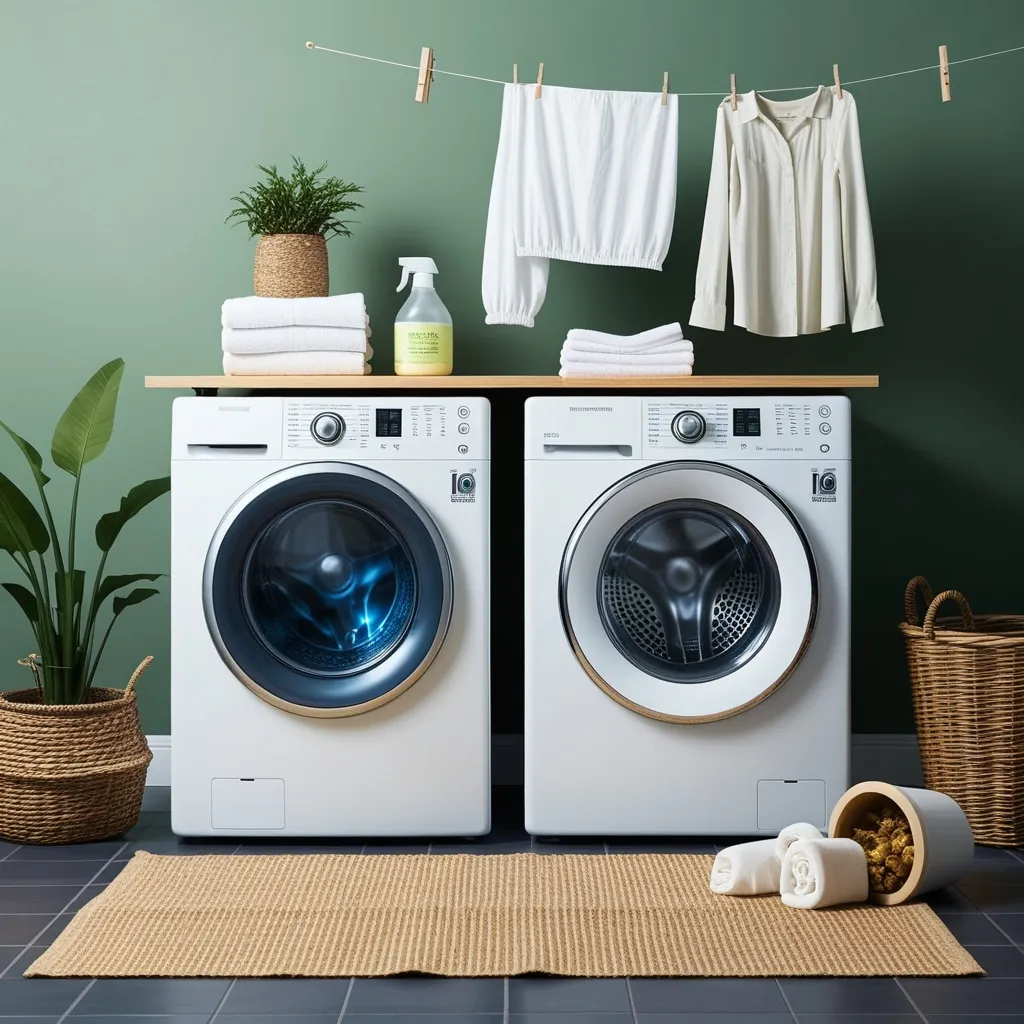Laundry: The Eco-Friendly Way
Let’s face it, laundry isn’t exactly the most exciting chore. But what if I told you that your weekly wash could be a game-changer for the environment and your wallet? Yep, you heard that right. With a few simple tweaks, you can turn this mundane task into a planet-saving, money-saving superpower. So, let’s dive in and explore how to make your laundry routine greener, cleaner, and leaner.
First things first: cold water is your new best friend. I know, I know, it sounds counterintuitive. But trust me on this one. Switching to cold water for most of your loads can save a ton of energy. We’re talking about 90% of the energy your washing machine guzzles just to heat up that water. Imagine the difference you could make by going cold for four out of five loads. You’d be saving enough CO2 to offset a year’s worth of dining out. Plus, your clothes will thank you. Cold water is gentler on fabrics, so your favorite tee will stick around longer.
Now, let’s talk about drying. If you’re still using a dryer for every load, I’ve got news for you. That thing is an energy hog. It’s like having a small factory in your laundry room. But fear not, there’s a simple solution: air-drying. Yep, just like grandma used to do. Hang your clothes on a line or a rack, and you’ll be saving a whopping 2,400 pounds of CO2 per year. That’s about 2% of the average American household’s annual emissions. Not too shabby for just hanging up your clothes, right?
But what if you don’t have a backyard? No problem. You can still air-dry indoors. A drying rack in your living room or a retractable clothesline in your bathroom works just as well. And bonus: your clothes will last longer without all that tumbling.
Okay, I get it. Sometimes you need to use a dryer. Life happens, and we don’t always have time to wait for air-drying. But even then, there are ways to make it more efficient. Use the high-spin speed on your washer to squeeze out more water before drying. And if your dryer has a moisture sensor, use it. It’ll stop the cycle when your clothes are dry, instead of running for a set time. Also, cooler, longer drying cycles are actually more efficient than short, hot ones. Who knew?
Speaking of machines, when it’s time to replace your old faithful washer or dryer, go for the high-efficiency models. Look for that ENERGY STAR label. These bad boys use way less energy and water than their older cousins. A front-loading washer, for example, can use up to 57.6% less energy and 37.8% less water than a top-loader. Sure, they might cost more upfront, but they’ll save you a bundle in the long run.
Here’s a pro tip: always run full loads. Your washer uses about the same amount of energy whether it’s half-full or stuffed to the brim. So make those loads count. Just don’t overdo it, or you’ll end up with a machine full of half-clean clothes.
Now, let’s talk about how often you’re washing your clothes. Do you really need to wash those jeans after every wear? Probably not. Most clothes can be worn multiple times before they need a wash. This little habit can make a big difference. Imagine washing your jeans every ten wears instead of every two. You’d be reducing energy use, climate impact, and water consumption by up to 80%. That’s huge!
Let’s not forget about detergents. Those little pods and powders can pack a punch when it comes to environmental impact. Opt for eco-friendly detergents made from plant-based ingredients. They’re biodegradable and work great in cold water. And here’s a secret: you’re probably using too much detergent. Using just the right amount not only saves you money but also helps your washer run more efficiently.
Here’s a quick one: clean your dryer’s lint filter. Every. Single. Time. It’s such a small thing, but it makes a big difference. A clogged filter makes your dryer work harder, use more energy, and can even be a fire hazard. So show that lint filter some love.
Have you heard of dryer balls? These little guys are awesome. They help separate your clothes in the dryer, improving airflow and reducing drying time. They also soften fabrics naturally, so you can ditch those chemical-laden fabric softeners and dryer sheets.
If you’re feeling really ambitious, consider a solar hot water heater. These systems are a great way to tap into renewable energy, and they have the fastest payback period of any renewable system. They can provide hot water for all your needs, including laundry.
Here’s a trick: do back-to-back loads. If you’re going to do laundry, make a day of it. Doing loads one after another helps retain heat and reduces the total energy used. It’s like a laundry marathon, but way less sweaty.
For the truly dedicated, consider reusing your wash water. If you’re a gardener, you can manually bucket the water before it goes down the drain. Just make sure you’re using eco-friendly detergents, and maybe invest in a greywater filter to catch any lint or impurities.
Let’s talk about dry cleaning for a sec. It’s convenient, sure, but it’s also a huge energy and chemical hog. If possible, skip clothes that need dry cleaning, or look for eco-friendly dry cleaning services. A lot of times, you can get away with spot cleaning or airing out clothes between wears.
Here’s another sorting tip: separate your heavy and light fabrics. Washing towels and jeans separately from your t-shirts and undies not only prevents damage but can also help your clothes last longer.
Last but not least, if you live somewhere humid, use the highest spin speed on your washer. It’ll squeeze out as much water as possible before drying, saving you time and energy.
Now, I know what you’re thinking. “This all sounds great, but does it really make a difference?” Let me paint you a picture. Imagine you decide to wash all your clothes in cold water, air-dry them, and use a high-efficiency washing machine. Over the course of a year, you could save hundreds of dollars on your utility bills and reduce your carbon footprint by several hundred pounds. That’s like taking a small car off the road for a month.
But it’s not just about the numbers. It’s about adopting a more sustainable lifestyle. It’s about being mindful of our impact on the planet and making choices that align with our values. Every load of laundry becomes an opportunity to make a difference.
And here’s the best part: these changes aren’t just good for the planet. They’re good for you too. Your clothes will last longer, you’ll spend less time doing laundry, and you’ll have more money in your pocket. It’s a win-win-win situation.
So next time you’re sorting your lights and darks, remember that you’re not just doing laundry. You’re participating in a global movement towards sustainability. You’re making a choice that ripples out far beyond your laundry room. And that’s pretty darn cool.
In the end, it’s not about being perfect. It’s about making small, consistent changes that add up over time. So start where you are, use what you have, and do what you can. Your future self (and the planet) will thank you.
Now, if you’ll excuse me, I’ve got a load of cold-water wash to hang up. Who knew doing laundry could feel so revolutionary?






